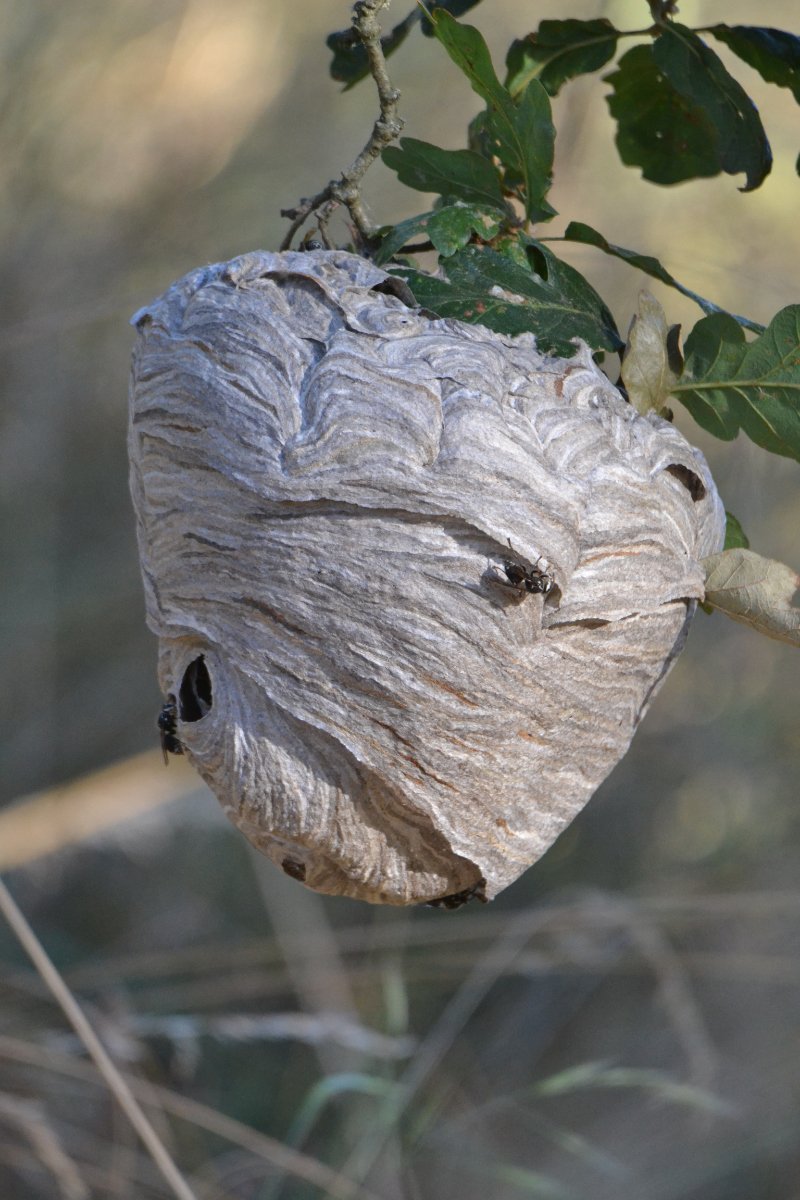Out at the end of this oak branch is a paper nest of the bald-faced hornet. The adult hornet is 5/8-3/4” long. They have black and white patterns on the face, thorax, abdomen, and first antennal segment. The wings are a smoky coloration.
The nest is constructed of wood pulp. I usually find a hornet on the posts of an old wooden fence along the river trail where they gather the top, soft layer of gray fibers. The nest is built in many layers of cells that are covered from the outside. In the end, the nest becomes this striated swirl of grays that is beautiful and sturdy.
The main entrance of the nest is placed at the bottom. This is easy to see in the second photo of the nest below. I just took this photo yesterday evening. This is the second attempt at building the nest. The first one was torn down. A serious word of caution. The adult hornets are very protective of the nest, and they will not hesitate to defend it if you get too close. They can sting repeatedly, and from my own experience, it is painful!
The diet of the adult consists of nectar, fruit juices, and perhaps eats other insects. The larva feed on insects that are pre-chewed by the adults.
In the late summer, the colony starts to produce males and young queens that will mate. The young mated females will overwinter in the soil or leaf litter—all of the other hornets will die off. The young queen will emerge next year to start a new colony.
At the bottom, there are a couple of photos of a bald-faced hornet on an oak limb that has these red nodules which I think are a type of gall. Maybe the hornets are attracted to these galls because the galls excrete plant juices that they can eat. I haven’t been able to find out more about it yet.
References
Milne, Lorus Johnson, and Margery Milne. The Audubon Society Field Guide to North American Insects and Spiders. Knopf: distributed by Random House, 1980.







